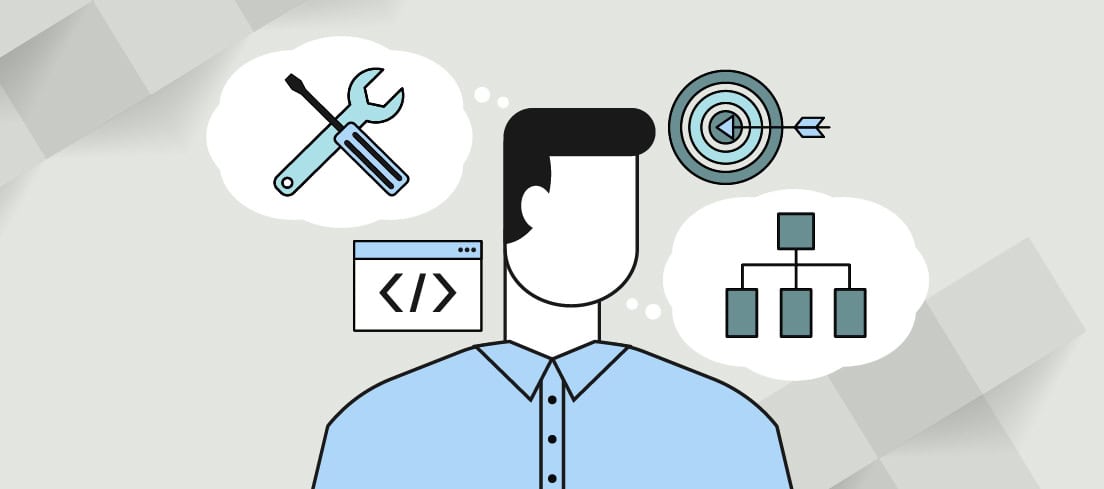Most organizations want to improve their agility to be more responsive to customer and market changes. They want to build on the success they have had with scrum at the team level and apply it across the whole organization. And while they might like to be more like Apple, Netflix or Airbnb, their challenge is that, unlike Silicon Valley
startups and tech giants, they are not starting from a clean slate. Instead, they are trying to change from a traditional, process-centric, hierarchical organization into something else.
Their challenge is compounded because there isn’t a repeatable process for this transformation; everyone starts in a different place and has different goals. The word “transformation” is itself part of the problem; it implies moving from one state to another. Perhaps a more realistic description is that the organization must evolve from one
that values processes and standards to one that values learning and flexibility. Evolution takes time and is ongoing. While standards remain important, even more important is to achieve quality in the products and services delivered.
Agile Is a Culture, Not a Process
An insistence on standardizing the ways that output is produced may add to the confusion of viewing agile as a process rather than a culture. In the 1970s, American auto manufacturers adhered to highly standardized processes but produced low-quality automobiles. They tried to copy Toyota’s production system to fix the problem but missed the essential role of continuous improvement. Toyota’s production system was not a fixed process, but a culture of continuous improvement that managers instilled and reinforced in their employees.
When Kiichiro Toyoda, Toyota’s second president, was asked about the risk of his loom design plans falling into competitors’ hands, he replied, “The thieves may be able to follow the design plans and produce a loom. But we are modifying and improving our looms every day … They do not have the expertise gained from the failures it took to produce the original… We need not be concerned. We need only continue, as always, making our improvements.”
To make continuous improvements, teams must be empowered to deliver small increments of value—with direct access to customers—in rapid cycles so that they can continually learn and improve. Teams working together to deliver complex products find that cross-team dependencies slow them down, reducing their ability to make decisions and get rapid feedback from customers. A main problem that organizations face when they scale agile is reducing or eliminating cross-team dependencies.
There are no simple answers for enterprise transformation; every team and product must solve slightly different challenges. There are, however, some common practices and patterns that help organizations improve their agility. They are simple to understand, but like scrum, are often hard to adopt. However, understanding them can help identify solutions that fit your unique situation and goals.
To Scale Up, First Scale Down
Only the simplest, leanest way of working will scale. You can’t scale complexity. Complex processes, organization structures and tool chains may seem necessary, but take another look: Is something absolutely essential? Does it require a degree of perfection that is impossible to attain? The idea of keeping things small or lean is reinforced by the ideas of Fred Brooks in his essay, The Mythical Man- Month. It is also demonstrated by the modern-day space company Space X, which employs fewer than
40 engineers to build all the software necessary to launch, manage and land the Falcon spaceships.
Keeping things small is not easy, particularly when you are dealing with complex systems that require specialists. Here are three things to consider:
- Employ specialists to teach others. Instead of getting another group to do something for the team, get someone from the other group to teach team members, scaling scarce skills in the organization, uncovering gaps in understanding and improving the solution’s clarity. Your ultimate goal should be to encourage people to develop a broad set of skills that complement their deep skills in several areas.
- Automate repeatable and error-prone tasks. Repetitive tasks that don’t require judgment to perform should be automated and made available on demand. The best candidates for automation emerge naturally from the teams trying to deliver rapidly; give them the time to automate. Resist the temptation to appoint a DevOps team; let the people who understand the problem solve that problem, or risk creating processes and
automation that are overly broad and useless. Automate just enough and no more. - Recognize that not everything should be agile. Agility is the application of empiricism to solve complex problems in which more is unknown than known. There are many simple and complex problems in large organizations where more is known than is unknown. In those instances, agile might not be the right approach. It can feel pointless to use an empirical approach to answer simple questions that have relatively easy answers.
Scaling Agility Is All About Teams
Cross-functional, self-organizing teams are at the heart of any agile transformation. Once they know what outcomes the organization wants them to achieve, these teams should have the freedom to do what is necessary to deliver those outcomes. They should frequently inspect what they are producing to ensure that it achieves the desired business outcome and the desired level of quality.
Agile teams tend to be small; scrum teams consist of three to nine people each. When the desired outcomes require more than one team, teams may become cross-functional and self-organizing. To focus on teams at scale requires that organizations concentrate on the following four things:
- Attract flexible people who continually learn. Agile requires team members who are willing to do whatever is needed to accomplish the team’s goals. The ideal team member has enough breadth and depth to learn quickly and pick up new skills as needed.
- Create cross-team specialists only when needed, and only for as long as needed. Generalists sometimes need to be supported by specialists, whose main role should be to teach people new skills and provide generalists with tools that help them do their jobs more effectively. Ideally, specialists should try to work themselves out of a job.
- Build communities of practice for continual improvement. Communities of practice help organizations build skills and share experiences and expertise across teams. These communities help team members develop their skills and careers as they learn from peers and mentors. Communities need organizational support and nurturing, but they repay that investment by helping to normalize and scale skills across teams and organizational structures. Make time for community participation, measure community contribution and factor community leadership into career-advancement decisions to help the organization grow its technical capabilities.
- Create a culture of servant leadership. Traditional, hierarchical organizations are characterized by top-down decision-making, while agile approaches encourage decisions that are informed by bottom-up intelligence. In other words, people closest to the problem are the ones best informed to make decisions about it. Leadership is critical to ensuring that teams have clear direction on the right problems to solve, the support to solve those problems, and an awareness of when they may need help and who can give it. This coaching style of leadership is often new to organizations and requires an investment of time and support.
Start From the Edges
Agility enables organizations to more readily respond to change while delivering increased value. Most organizations need agility in the parts of their business that are closest to customers.
Keeping customers at the center of agile scaling efforts helps focus on improving the customer experience and competitive position. Later efforts can then shift to internal efficiency, including a focus on HR, legal and finance.
Find out who the customers are. Design thinking and lean startup practices provide techniques that help organizations effectively understand their customers. Agile approaches provide mechanisms to better understand customers, such as frequent feedback, provided that actual customers are engaged. Because many teams only work with internal stakeholders, they miss the opportunity to better understand a real customer’s needs. Focusing teams on a set of customers and specific pain points makes it possible to scale customer knowledge and build a better understanding of their needs.
Empower product ownership. Without clear direction, an agile team will flounder, going from one “important” item to another. To effectively inspect and adapt, decisions must be made about the problem and solution. Product ownership provides a rudder to help stay the course.
Think in terms of outcomes and experiments, not features and functions. Although stakeholders hold important opinions, customers make the ultimate decisions. And while features are usually built with good intentions, if they are based on flawed assumptions, they will be ineffective. The fastest, most reliable
path to success is to identify unmet customer outcomes, then form and quickly test hypotheses to improve those outcomes. Breaking down complex problems into a series of hypotheses and testing them will provide the team with the flexibility and focus to deliver value.
##tweet##
Enable Scrum Masters to Raise and Remove Impediments
Incorporating scrum and agile helps make problems transparent. Organizations accustomed to hearing that “everything is fine” (until it is not) find this disconcerting, but it’s the means by which to identify and overcome obstacles.
Teams build resiliency by inspecting, adapting and overcoming challenges. But they can’t always overcome challenges without help; teams need engaged leaders who will intercede on their behalf. Sometimes leaders need assistance
to understand where their help is needed; that’s when the scrum master, acting on behalf of the team, needs to escalate problems to management.
Make the scrum master a valued position. This position is often filled by someone who complains least about taking on the role. But a failure to appreciate and empower the scrum master will undermine the scrum team’s ability to be effective. It is important to attract the right people and support them as they embody the scrum values of focus, commitment, respect, openness and courage.
Recognize that a scrum master is NOT a project manager. While project-management experience provides valuable insights, it may come with baggage. The biggest difference is that project managers, when necessary, are empowered to tell people what to do, while scrum masters are not. Instead, they teach people how to do something and hold them accountable to do things right. To lessen the temptation to slip into old habits, it helps if project managers transitioning into the scrum master role work with a different group of people.
Support the scrum master with experienced coaches. When driving organizational change, it is important to provide support for scrum masters. Effective communities of practice, combined with external coaches, can help scrum masters focus on developing team members and encouraging their teams to deliver more value.
Focus Leaders on Removing Impediments
Scrum masters often lack the authority and influence to remove impediments that lie beyond their own teams. They need executive help. By creating an enterprise scrum team, having an enterprise change backlog, and empowering a product owner for the change initiative, executives will get a taste for the agile approach as they help teams resolve issues.
Introduce an enterprise change backlog. When scrum teams identify impediments with which they need help, putting them on an enterprise backlog ensures they will get senior leadership attention. Just as the product backlog helps scrum teams focus on delivering value, a fully transparent enterprise backlog for organizational change issues enables leaders to focus on the things that will deliver the most value. It also provides a clear message that the executives support agile.
Make the executive team an agile team focused on delivering value and transparency. Executive teams that use agile practices demonstrate not only their support, but their confidence in using it to manage their own work. Ensure that sprint reviews, including discussions about progress and demonstrated success, are open to everyone.
Measure and communicate success. It is important to provide a platform that demonstrates teams’ success to the organization. Introducing an enterprise backlog and making the executive scrum sprints transparent help provide an organizational foundation to drive change. Scheduling regular events gives teams a chance to demonstrate how they are driving change and dealing with the issues they uncover.
Establish Measures to Drive Continuous Improvement
People-centric, lean, empirical processes enable teams to respond to the challenges of a changing world. However, teams also need a set of balanced, objective measures that tell them whether they are improving over time.
- Current value is what the organization derives from delivering value to customers. Examples include revenue, product cost ratio and net promoter score (NPS).
- Time to market is the time it takes for customers to start benefiting from a new idea or product improvement. Aspects of time to market include release frequency, the time it takes to stabilize a release and overall cycle time.
- Ability to innovate measures the ability to deliver solutions that meet customer needs. The usage index, defect vs. new feature ratio, and assessing overall quality help contribute to this insight.
Building an Agile Organization Takes Practice
Agility is an enabler that makes it possible to achieve your goals. It’s also a complex skill—like learning to play an instrument—that requires practice and dedication and is learned over time. And while there is always room for improvement, all that practice has a goal: to delight the audience, or in the case of the modern organization, to delight the customer.
A great orchestra is more than simply a collection of great musicians. The ability to work together is what makes them do great things. And in the context of delivering amazing value to customers and stakeholders, it means aligning teams with customer outcomes and creating an environment that supports and fosters change. Agility scales team-by-team, product-by- product, and creates an organization that is always learning, changing and improving.
Make the scrum master a valued position. This position is often filled by someone who complains least about taking on the role. But a failure to appreciate and empower the scrum master will undermine the scrum team’s ability to be effective. It is important to attract the right people and support them as they embody the scrum values of focus, commitment, respect, openness and courage.
Recognize that a scrum master is NOT a project manager.
While project-management experience provides valuable insights, it may come with baggage. The biggest difference is that project managers, when
necessary, are empowered to tell people what to do, while scrum masters are not. Instead, they teach people how to do something and hold them accountable to do things right. To lessen the temptation to slip into old habits, it helps if project managers transitioning into the scrum master role work with a different group of people.
Support the scrum master with experienced coaches. When driving organizational change, it is important to provide support for scrum masters. Effective communities of practice, combined with external coaches, can help scrum masters focus on developing team members and encouraging their teams to deliver more value.
Focus Leaders on Removing Impediments
Scrum masters often lack the authority and influence to remove impediments that lie beyond their own teams. They need executive help. By creating an enterprise scrum team, having an enterprise change backlog, and empowering a product owner for the change initiative, executives will get a taste for the agile
approach as they help teams resolve issues.
Introduce an enterprise change backlog. When scrum teams identify impediments with which they need help, putting them on an enterprise backlog ensures they will get
senior leadership attention. Just as the product backlog helps scrum teams focus on delivering value, a fully
transparent enterprise backlog for organizational change issues enables leaders to focus on the things that will
deliver the most value. It also provides a clear message that the executives support agile.
Make the executive team an agile team focused on delivering value and transparency. Executive teams that use agile practices demonstrate not only their support, but their confidence in using it to manage their own work. Ensure that sprint reviews, including discussions about progress and demonstrated success, are open to everyone.
Measure and communicate success. It is important to provide a platform that demonstrates teams’ success to the organization. Introducing an enterprise backlog and making the executive scrum sprints transparent help provide an organizational foundation to drive change. Scheduling regular events gives teams a chance to demonstrate how they are driving change and dealing with the issues they uncover.
Establish Measures to Drive Continuous Improvement People-centric, lean, empirical processes enable teams to respond to the challenges of a changing world. However, teams also need a set of balanced, objective measures that tell them whether they are improving over time.
- Current value is what the organization derives from delivering value to customers. Examples include revenue, product cost ratio and net promoter score (NPS).
- Time to market is the time it takes for customers to start benefiting from a new idea or product improvement. Aspects of time to market include release frequency, the time it takes to stabilize a release and overall cycle time.
- Ability to innovate measures the ability to deliver solutions that meet customer needs. The usage index, defect vs. new feature ratio, and assessing overall quality help contribute to this insight.
Building an Agile Organization Takes Practice
Agility is an enabler that makes it possible to achieve your goals. It’s also a complex skill—like learning to play an instrument—that requires practice and dedication and is learned over time. And while there is always room for improvement, all that practice has a goal: to delight the audience, or in the case of the modern organization, to delight the customer.
A great orchestra is more than simply a collection of great musicians. The ability to work together is what makes them do great things. And in the context of delivering amazing value to customers and stakeholders, it means aligning teams with
customer outcomes and creating an environment that supports and fosters change. Agility scales team-by-team, product-by- product, and creates an organization that is always learning, changing and improving.
Author
-

Dave West, a seasoned professional with 31 years of experience in the field, is a distinguished Product Owner and CEO at Scrum.org. With a background that includes roles at Rational Software, IBM Rational, and Forrester Research, Dave is a frequent keynote speaker at major industry conferences and a widely published author. For questions or inquiries, please contact [email protected].
View all posts








